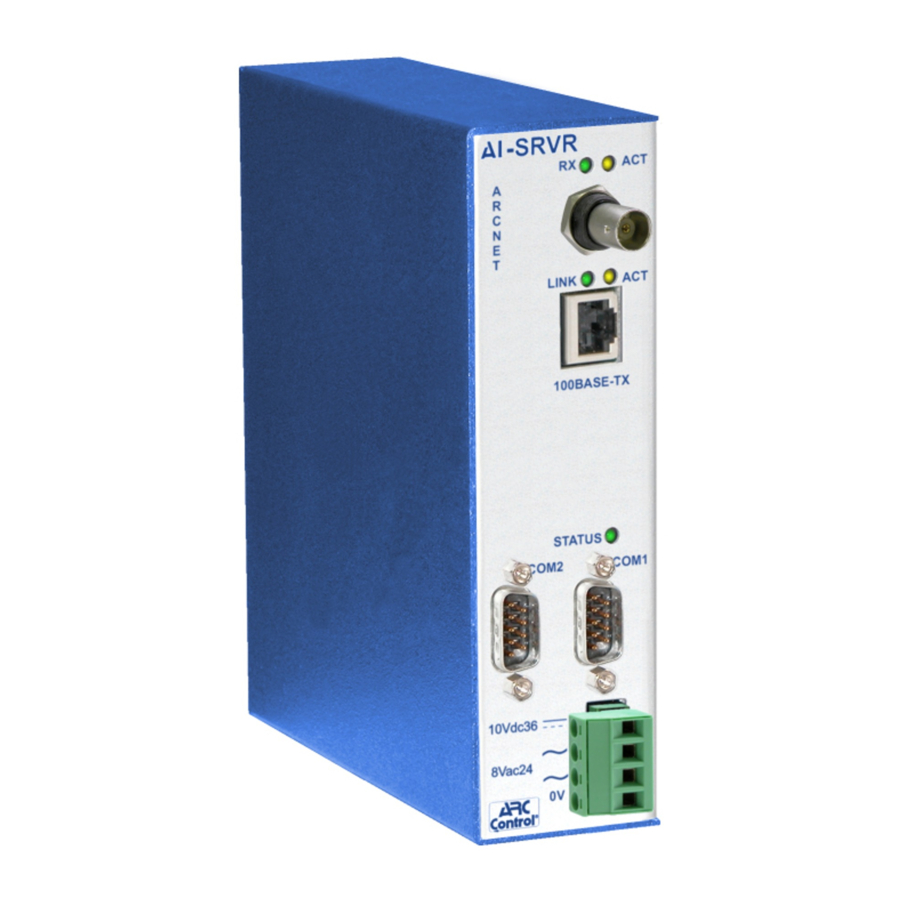- ページ 13
サーバー Contemporary Controls AI-SRVR-1485DのPDF マニュアルをオンラインで閲覧またはダウンロードできます。Contemporary Controls AI-SRVR-1485D 20 ページ。 Arcnet server to ethernet client

The screen of Figure 6 offers three case-insensitive options:
R forces an immediate refresh of the screen. Otherwise, the screen refreshes itself
automatically every 10 seconds.
S opens the Setup Screen for configuration (Section 4.2.2).
C resets all 4 packet counters.
Q exits the AI-SRVR program. This option is unavailable when connected to the AI-
SRVR via the COM2 port. This port only allows program monitoring — it does not
allow configuration or program control.
4.2.2 AI-SRVR Configuration
By pressing "S" from the AI-SRVR Statistics Screen, the default AI-SRVR Configuration
Screen of Figure 7 appears to allow control of 16 parameters. All fields in the left column
(except Node ID) are modified by pressing the
Function
Boot Protocol
Speed
Ext Timeout
Recon Timeout
Receive All
Node ID is 1 by default, but a value from 1–255 can be entered.
should be toggled to the desired mode: SERVER or PROXY.
is NONE by default, but can be toggled to DHCP.
is 2.5Mbs by default, but can be set from 156kbs to 10Mbs. The
7.5Mbs option is the undocumented "reserved" speed of the
COM20022 — but it is not recommended for use.
is STD by default, but can be set to 16X, 8X or 4X.
is STD by default, but can be set to 64Nodes, 32Nodes or 16Nodes.
(promiscuous mode) is ON by default, but can be toggled to OFF.
Figure 7 — AI-SRVR Configuration Screen
TD000200-0MB
space
bar. These are:
13
